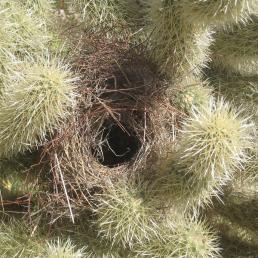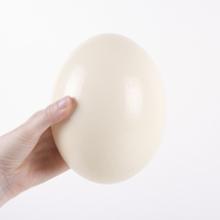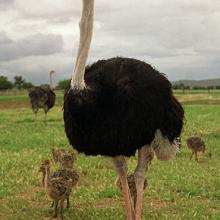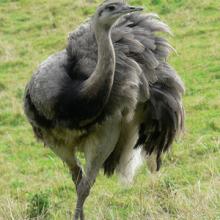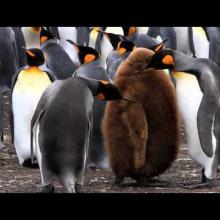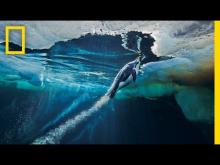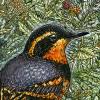

Join BirdNote tomorrow, November 30th!
Illustrator David Sibley and actor H. Jon Benjamin will face off in the bird illustration battle of the century during BirdNote's Year-end Celebration and Auction!
The ability to fly seems to define birds. But there are more than 50 species of flightless birds throughout the world — from the Ostrich and Kiwi to flightless rails, ducks, and this Humboldt Penguin. Why did they evolve the inability to fly? Many dwelt on islands. Others evolved until they were huge -- like the extinct 12-foot-tall Moas of New Zealand. And the penguins? Unlike most flightless birds, they still have the strong flight muscles and keeled breastbones of flying birds. They are supremely graceful flyers. But they do it under water.
BirdNote®
Flightless Birds: Evolving the Inability to Fly
Written by Bob Sundstrom
This is BirdNote.
It’s the ability to fly that defines birds for us, perhaps more than any other attribute. So how is it that there are flightless birds?
[Music: Nat King Cole’s “Straighten Up and Fly Right”]
More than 40 species* from the Ostrich and Kiwi to flightless rails, ducks, a cormorant in the Galapagos, and many others. It appears that these birds all evolved from flying birds. In effect, independently from one another, they evolved the inability to fly.
Why? Quite a few dwelt on islands where there were no terrestrial predators, so flying was superfluous, or perhaps too risky, if you got blown off the island. Others evolved until they were huge, like the now-extinct 12-foot-tall Moas of New Zealand: big enough to deter most predators, but hard to get off the ground. And some prehistoric flightless birds, like the so-called “terror birds” of South America, were both huge and the top predators on the block.
But what about penguins? [King Penguin calls, http://macaulaylibrary.org/audio/42302, 0.41-45.]
Unlike most flightless birds, they still have the strong flight muscles and keeled breastbones of flying birds. They are supremely graceful flyers.
But they fly under water.
[Music: Nat King Cole’s “Straighten Up and Fly Right”]
###
Bird sounds provided by The Macaulay Library of Natural Sounds at the Cornell Lab of Ornithology, Ithaca, New York. King Penguin calls [42302] recorded by Theodore A Parker III
‘Straighten Up And Fly Right’ by Nat King Cole and Irving Mills performed by the Nat King Cole Trio from The best of Nat King Cole, 2006, Capitol Records
BirdNote’s theme music was composed and played by Nancy Rumbel and John Kessler.
Producer: John Kessler
Executive Producer: Dominic Black
© 2015 Tune In to Nature.org August 2017 / September 2022 Narrator: Mary McCann
ID #: flight-10-2015-08-24flight-10
* Editor's note: There are nearly 40 living species of flightless birds, not including the penguins, which bring the total closer to 57.
